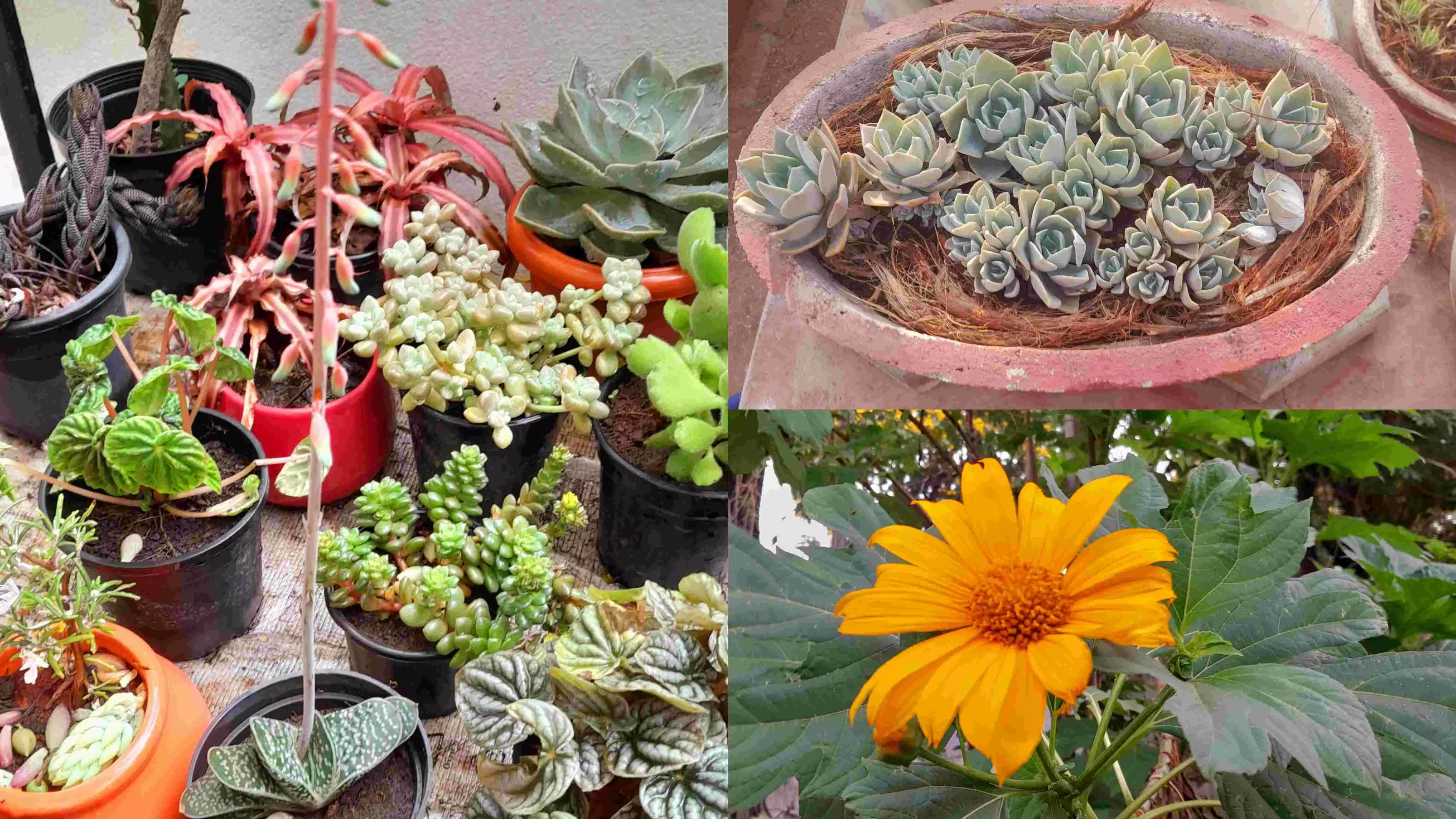Summer care tips: How to keep your houseplants happy in heat
Smaller potted plants can be moved under a shady tree and green netting also helps in summer months to save delicate plants
By Beyniaz Edulji
Hyderabad: Extreme summer heat such as we are experiencing lately can wreak havoc on your plants. Some sun-loving plants like jasmine, adenium, succulents and cacti fare better in high temperatures, as do coleuses and caladium, Mexican sunflower and Rangoon creepers but other plants don’t. One might even notice burn marks on leaves and flowers.
Move plants into the shade
Smaller potted plants can be moved under a shady tree. Green netting can also be used in the summer months to save delicate plants.
Water early morning or late evening
During the hot summer months, it is best to water your garden in the early morning before the sun starts beating down. If you wait until midday or even early afternoon, most of the water will likely evaporate before it travels to the roots. Late evenings are also a good time to water plants.
Dry leaves help in summer
Trees in the ground will shed leaves and flowers. Make use of these by gathering and piling leaves around the trunk to protect the moisture in the soil around the roots. Coconut husk in potted plants works the same way.
Increase humidity
If you have a small garden or plants on your balcony, those plants that thrive in high humidity such as spider plants, fittonia, calathea and ferns should be frequently sprayed with water.
You can also fill a shallow dish with pebbles, fill with water, and set your pot on top to create a humid microclimate for your plant that will help your plants survive summer.
Water deeply
Proper watering is the key in summer.
Heat and sun will cause the water to evaporate from the soil at a faster rate. In preparation for a heat wave, give your plants a deep watering. If you water quickly and not sufficiently, only the top of the soil gets wet.
Make sure that the water is absorbed by watering slowly.
Check your plants often
Check the soil’s moisture level often by looking and even touching the soil if necessary. Water when the soil feels dry at 1 or 2 inches down for most tropical plants. Another key indicator of fast-drying, compacted soil is when the soil pulls away from the sides of the pot.
If there’s a gap between the soil and the side of the pot, then it is time to water again.
Never fertilise during a heat wave
Plants get stressed during summer and should never be fertilised until it gets cooler. When your plant is in summer survival mode, it is not looking for extra nutrients and cannot make use of them. Fertilising the soil will result in further stress on your plant.
Give re-potting a miss
For the same reason, plants should only be re-potted during the monsoons or when temperatures are lower.
Delay pruning
Pruning also causes stress to your plant and it’s better to wait until temperatures get back to a normal range before snipping off branches and stems.
Signs of stress
Tropical plants, especially those with tender leaves, usually wilt with exposure to too much heat. Foliage that was once bright green may look pale when stressed. Sunburnt leaves and stems turn brown or yellow. Flowers and leaves fall off when a plant is stressed.
Indoor plants
Protect indoor plants from harsh sunlight near glass windows which only magnify the heat. Snake plants and sansevieria do not need much care or light even indoors. Air conditioning can dry up indoor plants even more and these plants should be closely observed, watered and sprayed frequently in the summer months.